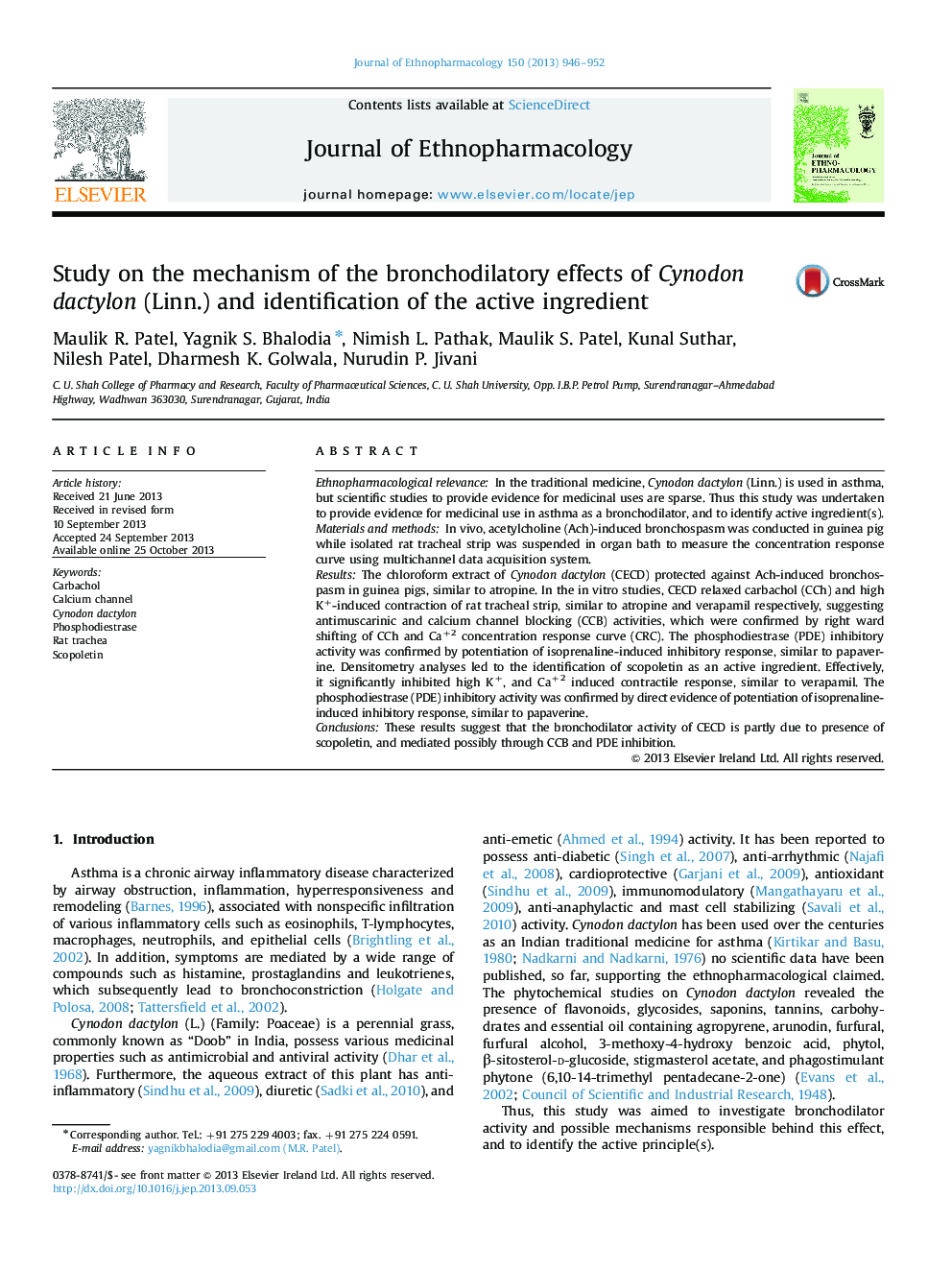| کد مقاله | کد نشریه | سال انتشار | مقاله انگلیسی | نسخه تمام متن |
|---|---|---|---|---|
| 2545334 | 1560406 | 2013 | 7 صفحه PDF | دانلود رایگان |

Ethnopharmacological relevanceIn the traditional medicine, Cynodon dactylon (Linn.) is used in asthma, but scientific studies to provide evidence for medicinal uses are sparse. Thus this study was undertaken to provide evidence for medicinal use in asthma as a bronchodilator, and to identify active ingredient(s).Materials and methodsIn vivo, acetylcholine (Ach)-induced bronchospasm was conducted in guinea pig while isolated rat tracheal strip was suspended in organ bath to measure the concentration response curve using multichannel data acquisition system.ResultsThe chloroform extract of Cynodon dactylon (CECD) protected against Ach-induced bronchospasm in guinea pigs, similar to atropine. In the in vitro studies, CECD relaxed carbachol (CCh) and high K+-induced contraction of rat tracheal strip, similar to atropine and verapamil respectively, suggesting antimuscarinic and calcium channel blocking (CCB) activities, which were confirmed by right ward shifting of CCh and Ca+2 concentration response curve (CRC). The phosphodiestrase (PDE) inhibitory activity was confirmed by potentiation of isoprenaline-induced inhibitory response, similar to papaverine. Densitometry analyses led to the identification of scopoletin as an active ingredient. Effectively, it significantly inhibited high K+, and Ca+2 induced contractile response, similar to verapamil. The phosphodiestrase (PDE) inhibitory activity was confirmed by direct evidence of potentiation of isoprenaline-induced inhibitory response, similar to papaverine.ConclusionsThese results suggest that the bronchodilator activity of CECD is partly due to presence of scopoletin, and mediated possibly through CCB and PDE inhibition.
Figure optionsDownload high-quality image (100 K)Download as PowerPoint slide
Journal: Journal of Ethnopharmacology - Volume 150, Issue 3, 12 December 2013, Pages 946–952